Content
Regular feeding is a mandatory procedure when growing cultivated plants. Fertilizer Nutrisol is a complex product containing a large amount of nutrients. It is used to feed various fruitful and ornamental plants. Gardeners are advised to read the original instructions before use.
Description of the drug Nutrisol
The product is a water-soluble fertilizer. The preparation is intended for root and foliar feeding. It is used for crops grown in open ground and in protected soil, including fertilizing indoor plants.
Nutrisol composition
The preparation is enriched with valuable substances, especially minerals and trace elements. The composition is balanced and depends on the type of fertilizer.
Main components:
- nitrogen;
- phosphorus;
- potassium;
- iron;
- manganese;
- copper;
- boron
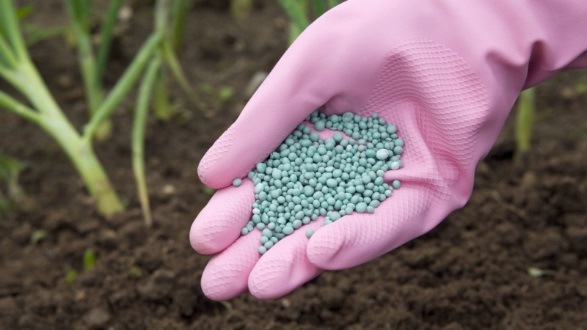
"Nutrisol" has an effective effect on indoor plants, fruit trees and vegetables
To fertilize indoor flowers, use "Nutrisol" without nitrogen. It is best suited for slightly acidic soils.
About the benefits of micronutrients for different cultures:
Types and forms of release
There are several varieties of Nutrisol. They differ in purpose and concentration of the main active ingredients.
The most popular type is Nutrisol 20-20-20. The fertilizer contains 20% nitrogen, potassium and phosphorus. Such a preparation is most often used for ornamental plants grown indoors or outdoors.
Depending on the concentration of nitrogen, phosphorus and potassium, the following types of "Nutrisol" are distinguished:
- for conifers - 9-18-36;
- for strawberries and strawberries - 14-8-21;
- for tomatoes 14-8-21;
- for cucumbers - 9-18-36;
- for ornamental shrubs - 15-5-30.
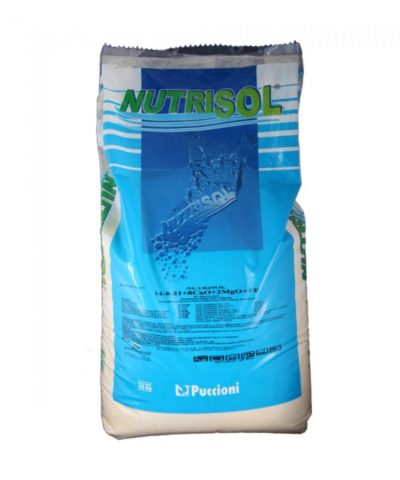
The drug is available in the form of a powder that dissolves well in water.
The drug is available in the form of a crystalline powder. The fertilizer is available in packages from 100 g. The most common packaging options are 500 g and 1 kg.
Impact on soil and plants
Due to its balanced composition, the drug has a wide spectrum of action. The product dissolves completely in water without the formation of a solid precipitate. All nutrients are absorbed by the root system without lingering in the soil.
The main properties of "Nutrisol":
- Soil enrichment with rare elements.
- Reducing the negative effects of insecticides and fungicides.
- Increasing the resistance of crops to unfavorable factors.
- Increase in the yield of fruit crops.
- Protection against exposure to chlorine, sodium and other harmful elements.
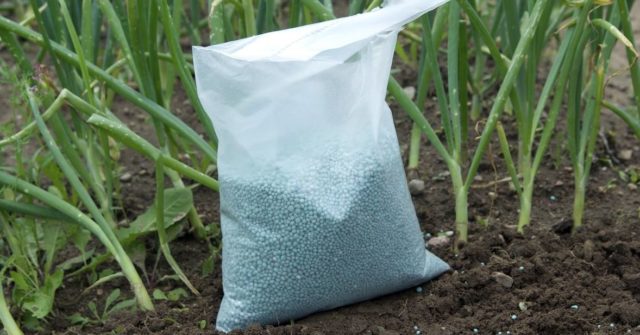
Through the root system, fertilizer enters the plant, providing it with the necessary minerals
Regular use of the mineral supplement helps prevent the development of bacterial and fungal diseases.The components included in the composition stimulate growth, strengthen the root system.
According to reviews on the fertilizer Nutrisol for roses, the drug helps to increase the flowering period. The mineral additive accelerates the period of bud formation, enhances the color saturation of ornamental plants.
Consumption rates
The amount of fertilizer required for different crops is different. This is because the need for nutrients is not the same.
The following consumption rates apply for the Nutrisol fertilizer:
- tomatoes, eggplants - 15-20 g per 10 liters of liquid;
- conifers - 30-50 g per 10 liters of water;
- indoor plants - 15-20 g per 10 liters of liquid;
- cucumbers - 20-25 g per 10 l;
- roses - 15-20 g per 10 liters of water;
- fruit trees and berry bushes - 15-20 g per 10 liters of water.
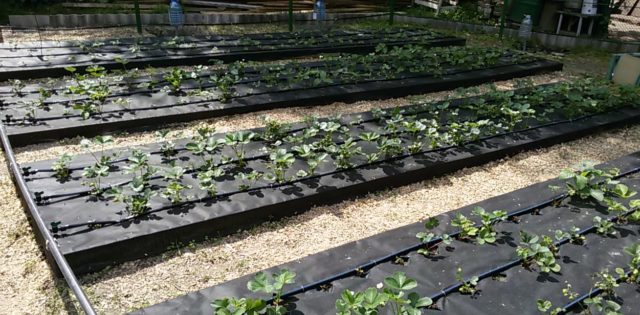
Fertilizer is not in the soil for a long time, as it is completely absorbed by the plant
Not only the consumption of powder for preparing the working fluid differs, but also the frequency of feeding. Indoor, fruit and berry and ornamental plants, including roses, are fertilized 3-4 times per season. A similar scheme applies to cucumbers, tomatoes and eggplants. Means Nutrisol Needles is enough to make 2 times per season.
How to apply correctly
The drug is easy to use. To prepare the working fluid, it is enough to mix the powder with water. But the procedure should be carried out in strict accordance with the instructions. Otherwise, even a safe mineral supplement can be harmful.
How to breed correctly
Prepare the working fluid in a suitable container. The use of food containers is strictly prohibited.
First of all, you need to determine the required amount of working fluid. It is calculated based on the consumption rates for specific crops.
The required amount of powder must be measured out with a measuring spoon. The drug is mixed with water, stirred thoroughly until completely dissolved.
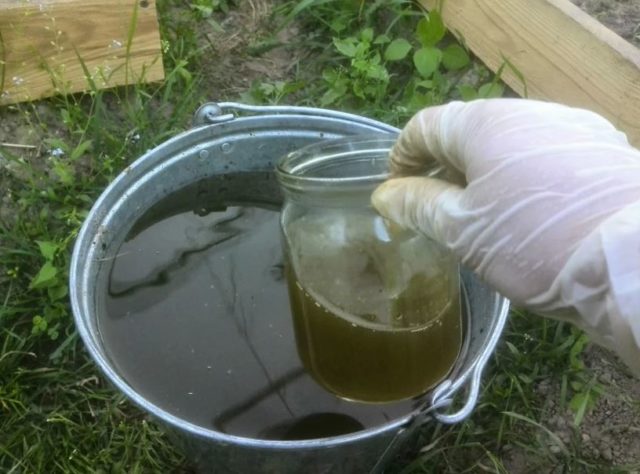
The dressing solution is poured under the root of the plant
To dilute "Nutrisol", you can use water of any degree of hardness. However, it is easier for the root system to obtain minerals from soft water. To reduce the hardness, you can boil and cool the liquid, or stand it for 3-4 days.
Instructions for use
The diluted fertilizer is applied at the root. The product is not used for spraying, since this method excludes the assimilation of the constituent substances. The liquid must be applied at the root so that the microelements get into the plant faster.
"Nutrisol" can be used for root drip irrigation. This option is optimal when it is necessary to process large areas.
For vegetable crops
The drug can be used for any fruit plants that are grown in the open field. Most often Nutrisol is used for cucumbers. Such a culture is demanding on the composition of the soil. When planting in a poor soil devoid of minerals, the formation of fruits is disturbed.
Cucumbers are watered with Nutrisol during the active growing season. Top dressing is carried out 3-4 times. For each plant, 10 liters of working fluid are used.
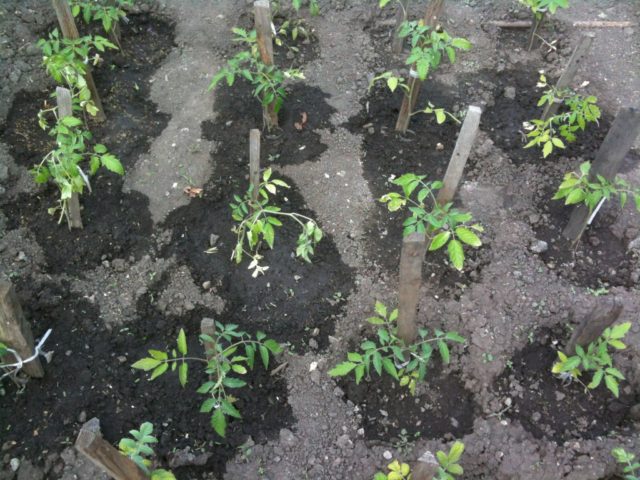
Water-soluble fertilizer can be used in indoor greenhouses and outdoors
Fertilizer Nutrisol for tomatoes is used in a different way. Under each bush, 5 liters of working fluid are introduced. Feeding eggplants, peppers and zucchini is carried out in a similar way.
For fruit and berry crops
The Nutrisol fertilizer for strawberries and strawberries is in the greatest demand among gardeners. Such berries are considered the most demanding on the composition of the soil and need a large amount of trace elements during the period of fruit formation. The drug helps to increase the mass of berries, meets the need for basic components and prevents the development of diseases.
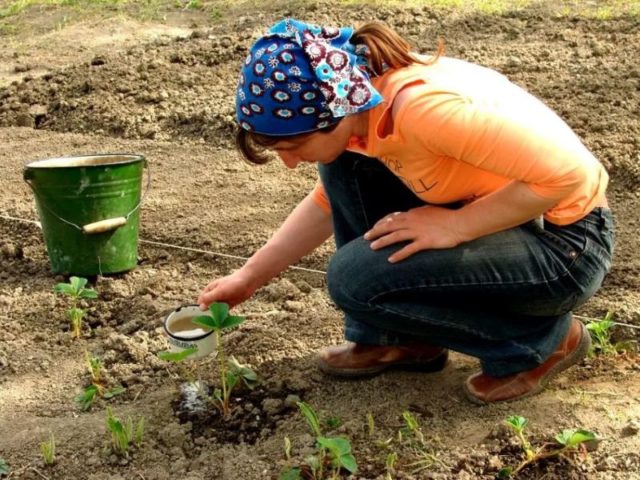
Increased dosage of fertilizer can affect planting quality and yield.
For 1 square meter of planting, about 1 liter of working fluid is required.For strawberries and strawberries, 15-20 g of powder is used per 10 liters of water. The same amount is taken for other berry bushes. Fertilizing fruit trees requires 10 liters of working fluid. If signs of micronutrient deficiency are detected, the concentration of the powder in the top dressing can be increased to 25-30 g per 10 liters.
For garden flowers and ornamental shrubs
Numerous customer reviews of Nutrisol for roses indicate that such a tool helps to extend the flowering period and enhance the color saturation. Therefore, this type of fertilizer is actively used when growing ornamental shrubs in the open field.
Top dressing is carried out regardless of the stage of growth. The greatest need for microelements is experienced by young plants, as well as flowers that have recently undergone transplantation. For irrigation, a working fluid is prepared from 10 liters of water and 20 g of Nutrisol. Top dressing is recommended to be carried out at least 1 time per month.
For indoor plants and flowers
Ornamental crops that are grown indoors also need regular feeding. It is recommended to carry out it 3-4 times a season.
For watering small indoor plants, 200-300 ml of working fluid is enough. For large flowers, 0.5-1 l of diluted fertilizer is required.
It is recommended to increase the frequency of mineral recharge during the period of bud formation. After flowering, fertilizer is applied 1-2 times to replenish the supply of trace elements.
Pros and cons of using
Nutrisol has a number of advantages over other fertilizers. Therefore, such a mineral supplement is in great demand among gardeners.
Main advantages:
- Complex balanced composition.
- The absence of harmful substances causing the phenomenon of phytotoxicity.
- Easy to use.
- Completely soluble in water of any hardness level.
- Increase in the yield of fruit crops.
- Affordable price.
- Safety for the human body.
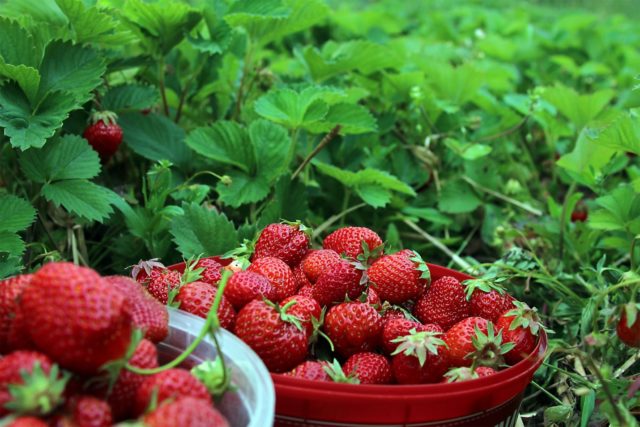
Fertilizer can be used on calcareous and alkaline soils
Despite a number of advantages, Nutrisol also has disadvantages. Therefore, such a remedy cannot be called universal for all plant species.
The main cons:
- Minerals are assimilated only in soils with acidity below 6 pH.
- The tool can be applied only in a diluted form, exclusively at the root.
- Abuse can damage the microorganisms in the soil.
- Nitrogen and phosphorus, which is not assimilated by plants, is able to accumulate in the soil.
- The mineral fertilizer is quickly washed out of the soil.
Potential harm "Nutrisola" emphasizes the need to use such a tool in strict accordance with the instructions. When processing plants, it is necessary to prevent contact of the working fluid with mucous membranes, exclude ingestion into the mouth or respiratory tract.
Compatibility with other drugs
"Nutrisol" combines well with pesticides, insecticides, as it is not phytotoxic. The drug can be used simultaneously with foliar mineral supplements. According to the instructions for the use of Nutrisol fertilizer for conifers, when combined with other agents, it is necessary to take into account the concentration of potassium salts, aluminum and copper in the composition, since an excess of these components can harm the plant.
Conclusion
Fertilizer Nutrisol is a popular tool for feeding fruit and ornamental plants. The preparation contains nitrogen, potassium and phosphorus, as well as a set of additional trace elements. These substances are necessary for full growth, increasing yields and protecting the plant from negative factors. The drug is very easy to use, since it is enough to dissolve it in water and water it.








